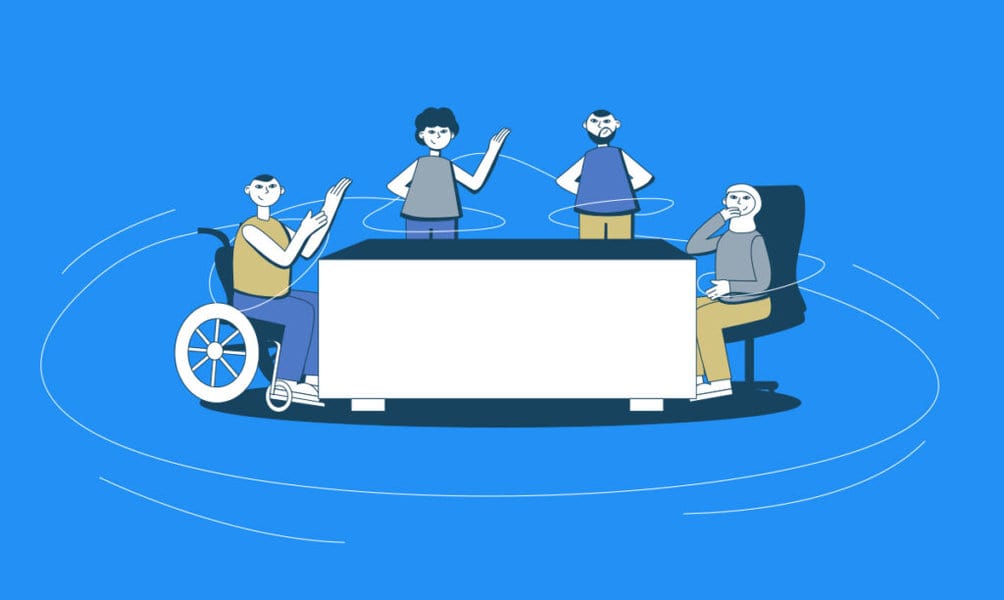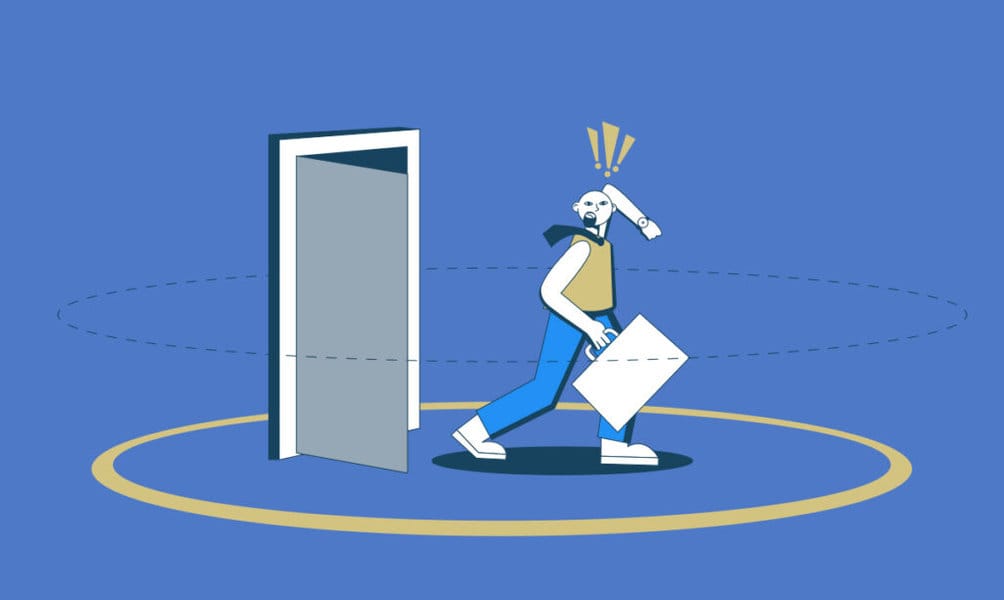Welcome back to theworkplace! You may feel overwhelmed by the responsibilities that await you or the uncertainty of what challenges lieahe ...
Back to Performance Management
Employee Personality Types and How To Manage Them
Written by: Talia Knowles
Talia Knowles is an avid reader, writer, and coffee enthusiast, with over five years of experience in writing and editing.
Reviewed by: Keca Ward
As a seasoned HR professional with over 20 years of experience, Keca is an expert in various aspects of Human Resources.
Updated on March 7, 2024

Employee Personality Types and How To Manage Them
- Types of Employees
- Common Challenges in Employee Management
- Effective Management Techniques for Different Workplace Personalities
- FAQs
Countless studies have shown that diversity in the workplace leads to more positive outcomes. Besides the importance of demographical diversity, teams need a myriad of different workplace personality types to function best.
However, without the knowledge of how to best manage different personalities and their different approaches to work, managers may discourage or frustrate employees and themselves.
On the other hand, knowledge of how to manage, motivate, and reward varying personalities will improve the cohesion of your team, leading to improved productivity and morale.
Types of Employees
First, it’s important to note that not all employees will fall perfectly into one of the following categories, and there will almost always be an overlap between two or more categories.
Rather than a tool for classifying your employees, think of these “types” as a guide to managing certain personality traits, which different employees might reveal consistently or occasionally.
1. The Proactive Performer
The proactive performer is a self-motivated, high achiever who takes initiative to get things done. This person places great value on their output and expects to be recognized accordingly.
Management Strategies
To keep proactive performers motivated, continuously provide them with challenging tasks and opportunities for growth. They’ll love the chance to apply themselves. Though these employees are internally driven, it’s still vital to recognize them and reward their achievements.
You can also encourage them to expend some of their energy mentoring other employees.
2. The Reluctant Worker
The reluctant worker is on the other side of the spectrum from the productive performer. They are characterized by low motivation and resistance to change, and often display a negative attitude.
Management Strategies
Managing the reluctant worker requires a few steps. First, it’s critical to find out why they aren’t working hard. Are they going through something difficult in their personal life? Or are they planning on quitting soon and don’t feel the need to put in effort?
As you can imagine, the range of reasons someone may demonstrate reluctant worker qualities demands very different responses from management.
If the employee is going through a difficult time, provide relevant resources and consider offering them some type of leave.
If they have a bad attitude because they feel underappreciated or inadequately compensated, meet with them to address these concerns. If nothing can be done to make them happy, it may be best for both parties to part ways.
Finally, someone who has one foot out the door is wasting your organization’s resources. It’s best to identify these situations as early as possible and take action immediately.
If none of these situations apply, it’s possible that the employee just needs some extrinsic motivation. Provide them with additional training or new assignments requiring more focus and effort.
3. The Team Player
Next, we have the team player. These employees are collaborative, supportive, and adaptable to changing circumstances for the good of the team.
Management Strategies
Team players function best when they know their work is helping other people, so be sure to keep them in a collaborative role that fosters teamwork and inclusivity.
Encourage them to share their ideas and feedback and be intentional about recognizing their contributions to a cohesive team dynamic.
4. The Innovator
Innovators are creative, forward-thinking risk-takers who like to push the limits and pioneer new ways of doing things.
Management Strategies
Provide freedom to explore new ideas wherever possible and create a supportive environment that tolerates calculated risks. A few flops are inevitable, but be sure to acknowledge and celebrate successful innovations.
5. The Perfectionist
A successful workplace needs a balance of people who are more flexible and people who adhere firmly to standards. Perfectionist personality types fit clearly in the latter category.
They are detail-oriented and set high standards for themselves and others to always meet deadlines.
Management Strategies
Though they contribute many positive elements to a workspace, perfectionists can also cause tension with employees who may be less organized.
Careful management strategies will ensure that varying personalities interact in ways that make each other better rather than get on each other’s nerves.
When communicating with perfectionists, you may need to impose a time limit to complete tasks to help them keep things moving rather than fixating on accomplishing one thing perfectly. Offer constructive feedback and support and encourage work-life balance to prevent burnout.
6. The Entertainer
The entertainer is a people person through and through. They can get along with anybody and always seem to be the center of attention.
Management Strategies
With effective leadership, these employees are critical assets. They are excellent in sales or customer-facing roles and can bring a sense of cohesiveness to the team by making everyone feel seen and comfortable.
On the other hand, if mismanaged, an entertainer’s behavior can become a distraction. Some chitchat at work is acceptable, but too much can take away from productivity and keep other employees from focusing on their work.
Common Challenges in Employee Management
Managers should acknowledge that different personalities may have varying communication styles, work preferences, and values. Encouraging knowledge sharing and respecting each group’s unique contributions can lead to a more harmonious and productive team.
Balancing individual and team goals can be a delicate task, but skilled managers should work to align individual objectives with the overall team and organizational goals.
This involves setting clear expectations, fostering teamwork, and recognizing that individual success contributes to the team’s collective success. Striking this balance ensures that individual and team achievements are celebrated and valued.
1. Communication
Various personality types communicate differently, which can lead to a communication breakdown. Misunderstandings, low morale, and reduced productivity can all result from these breakdowns, so it’s essential for managers to support healthy communication.
Managers should prioritize open and transparent communication, ensuring information flows freely within teams. It’s also important to be cognizant of different personality types and the way they prefer to communicate and encourage employees to meet each other in the middle.
Encouraging active listening and providing multiple channels for communication can help bridge gaps and create a more harmonious work environment.
2. Conflict Resolution
Conflict resolution is critical for managers as conflicts are inevitable in any workplace. Effective conflict resolution involves impartial mediation, identifying root causes, and finding mutually beneficial solutions.
Managers should foster a culture where conflicts are viewed as opportunities for growth and an increased understanding of the different personalities represented in the workplace.
3. Employee Engagement
Maintaining motivation among employees is essential for sustained productivity and job satisfaction. A manager can achieve this by recognizing and rewarding achievements, offering opportunities for skill development, and creating a positive work atmosphere.
Regular feedback and clear career paths can also help employees stay motivated and engaged.
Navigating generational differences in the workplace requires a nuanced approach.
Effective Management Techniques for Different Workplace Personalities
Scheduled individual meetings between managers and employees provide a platform for discussing progress, dealing with concerns, and building a stronger working relationship.
These meetings offer opportunities for managers to get to know each employee’s work and communication styles. When employees feel known, managers are better equipped to provide constructive feedback, recognize achievements, and identify areas for improvement.
Acknowledging and appreciating employee contributions through formal or informal recognition programs, bonuses, or incentives can boost morale and motivation. Recognizing achievements reinforces a sense of value within the organization.
Offering flexible work options, such as remote work, flexible hours, or compressed workweeks, can accommodate diverse employee needs, improve work-life balance, and enhance overall job satisfaction.
Finally, team-building activities and workshops can strengthen relationships among team members, improve collaboration, and promote a positive team culture. These activities help employees feel more connected to their colleagues and the organization.
FAQs
To create an inclusive environment, provide spaces for focused work (for introverts) and collaborative areas (for extroverts). Encourage open communication and offer flexibility in work styles, allowing employees to choose the environment that suits them best.
Promote diversity and inclusion through cultural sensitivity training, celebrating cultural holidays and events, and fostering a culture of respect where diverse perspectives are welcomed and respected.
Managing remote employees requires clear communication, regular check-ins, and the use of technology to bridge the physical gap. Flexibility in work hours and tasks can accommodate different preferences and personalities.
Implement mentorship programs where seasoned employees can guide newer ones. Assign tasks based on skill levels, and encourage knowledge sharing through regular team meetings or training sessions.
Address such situations with empathy and open dialogue. Encourage employees to express their concerns while emphasizing the importance of adhering to company values and policies. Seek compromises when possible, and involve HR if necessary to find equitable solutions.
Featured Resources

Employee performance reviews are a critical part of performance management and contribute toward continuous improvement. Still, they always seem tob ...

Diversity — such a small word for such a big theme. It might be one of the most popular buzzwords you hear around the office today, but do youreal ...

